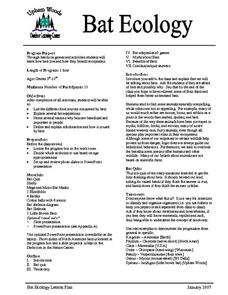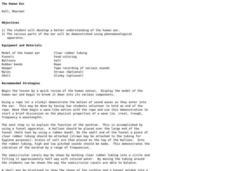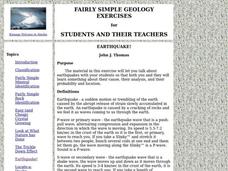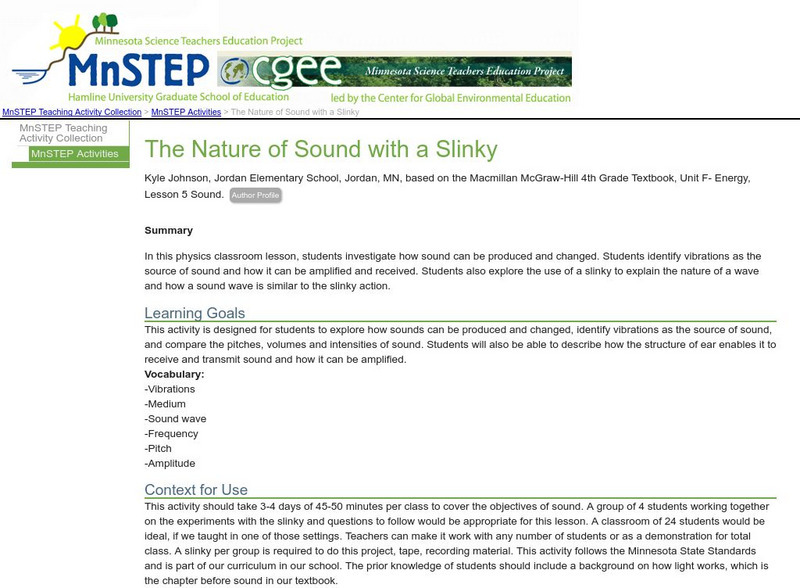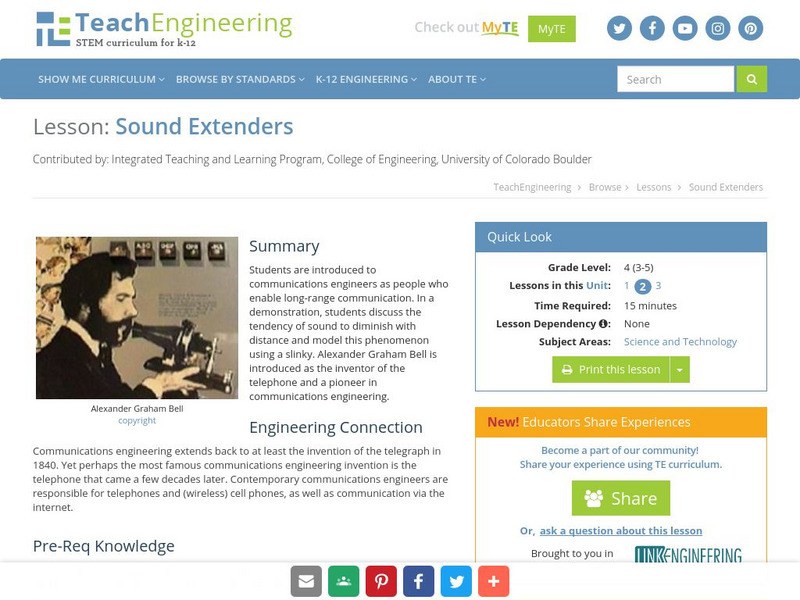Curated OER
Applied Science - Physics (5A) Pre Lab
Fifth graders look at different types of waves. In this wave lesson plan, 5th graders find the difference and similarities of electromagnetic and physical waves. They review the components of waves such as crest, trough, wavelength, and...
Curated OER
Measuring the Speed of a Wave
Students create an experiment in which they measure the speed of a wave and record the data in a graph. They work in small groups to write the procedure for the experiment and share it with another group for cross checking of the...
Curated OER
Under the Ice: Imaging Glacier Bases with Sound
Students investigate with radio waves that are used to remotely sense the topography beneath the ice sheet. They experiment with travel time of waves and convert data to distance and depth. As a result, they develop a profile of the...
Curated OER
Applied Science -Physics (2B) Pre Lab
Second graders look at different types of energy. In this energy lesson, 2nd graders define energy and the difference between kinetic and potential energy. They see examples with falling books and a slinky.
Curated OER
Bat Ecology
Students, through hands on games and activities, discover how bats live and how bats benefit ecosystems. They play a game designed to show them how echolocation works and another to show how mother bats locate their young through their...
Curated OER
The Human Ear
Students explore the human ear. In this biology lesson plan, students develop a better understanding of the various parts of the human ear as they explore a hands-on apparatus.
Curated OER
Locate-a-quake
Student, use seismic readings of the same earthquake from three recording stations and locate the epicenter of an earthquake on a map.
Curated OER
Earthquake!
Students study causes, probability and location of earthquakes. They complete a number of activities and look at web pages to examine the characteristics of earthquakes.
Physics Classroom
The Physics Classroom: Sound Waves and Music: Sound as a Longitudinal Wave
Students explore and discover how sound is created through longitudinal waves.
Physics Classroom
The Physics Classroom: Waves and Sound: Slinky Lab Interactive
Manipulate this virtual slinky that consists of a collection of dots to represent its coils. Grab a coil, and shake it back and forth to create vibrations which travel through the slinky from the location where it is shook to the ends...
Science Education Resource Center at Carleton College
Serc: The Nature of Sound With a Slinky
A physics lesson plan where students investigate how sound can be produced and changed. Students identify vibrations as the source of sound and how it can be amplified and received, and then explore the use of a slinky to explain the...
TeachEngineering
Teach Engineering: Sound Extenders
In this lesson, students are introduced to communications engineers as people who enable long-range communication. In the lesson demonstration, students discuss the tendency of sound to diminish with distance and model this phenomenon...




